Highlights: Building Chip Industry Workforce of the Future at SEMICON West 2023
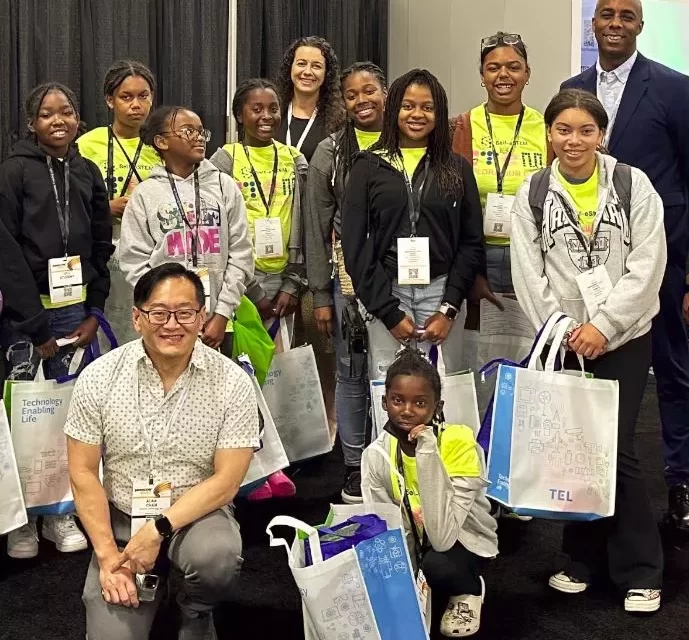
“Hire us for our potential!” This was the urgent call to employers from Marcus Knighton, one of the three young professionals who starred in the Roadtrip Nation documentary Chip In. “My generation is more than just a degree, GPA or a certificate,” said Knighton, who now works at Accenture. “There are many young adults who will come into a company and outperform those with degrees.”
He and fellow Roadtrippers Alyssa Feagans and Tara Greig shared their experiences and insights from their multi-state tour meeting with experts from academia and the semiconductor industry during a panel moderated by SEMI Foundation Executive Director Shari Liss on the keynote stage at SEMICON West 2023 in San Francisco in July. Throughout the conversation, panelists discussed challenges of overcoming imposter syndrome – even seasoned professionals struggle with it – the impact of new technologies, such as AI on the future and the importance of being open to different opportunities.
This year’s Workforce Development (WFD) Pavilion in Moscone North Hall was aptly situated next to headshot central, where participants could sit for a professional portrait photo, and the 20Under30 lounge, which recognized 20 industry professionals under the age of 30 for their outstanding leadership.
The WFD Pavilion provided a welcoming space for everyone. Many students and job seekers who visited this year’s pavilion met with talent professionals from sponsoring companies to learn about job opportunities at each: Advantest America, ASM, ASML, BHS, Enpro, Comet Group, Edwards Vacuum, EMD Electronics, EV Group, Lam Research, MNT-EC, Nikon Precision and TEL.
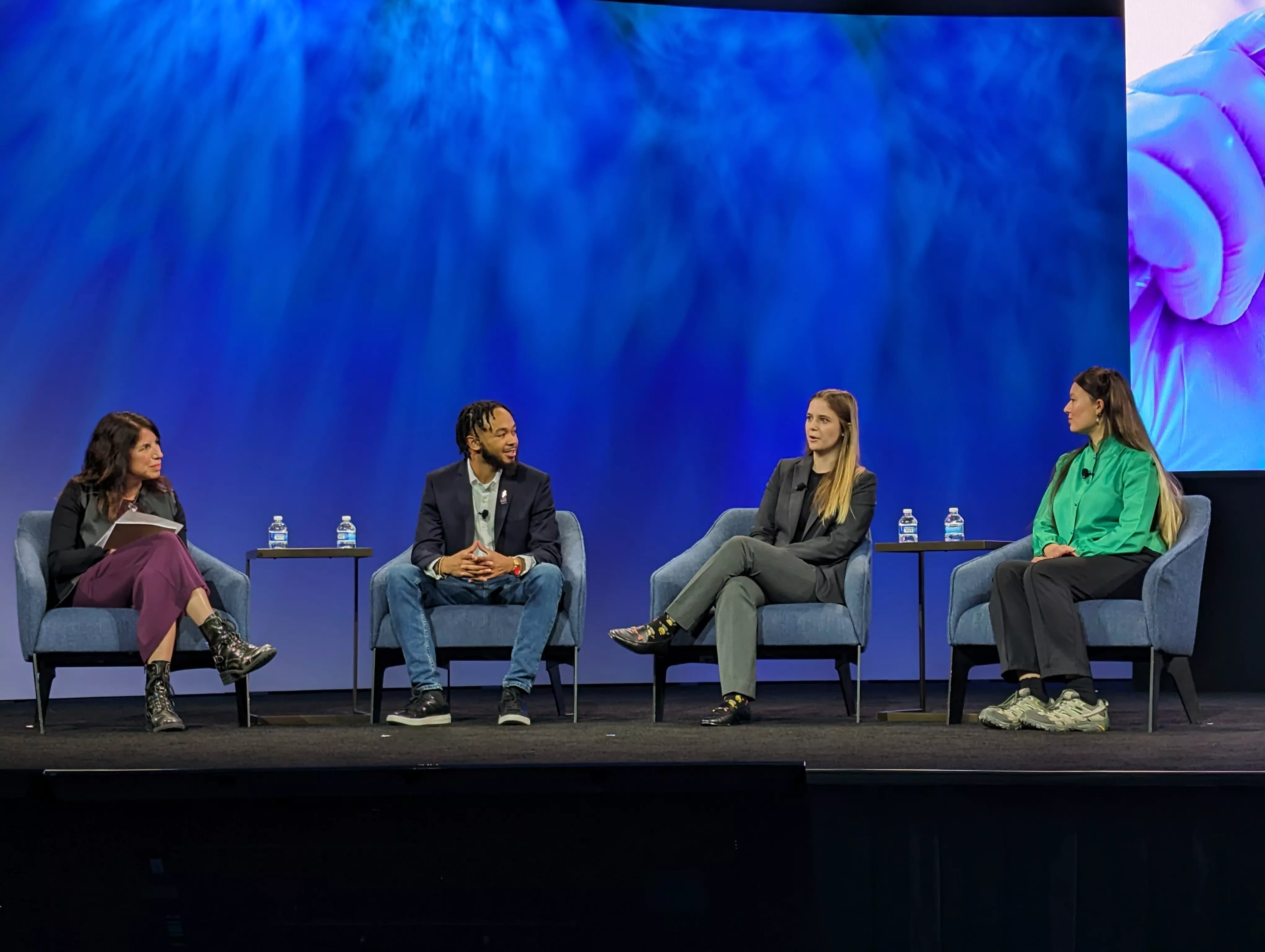
Roadtrip Nation panel on SEMICON West Keynote Stage. Left to right: Shari Liss, SEMI Foundation; Marcus Knighton, Accenture; Alyssa Feagans, Aeris; Tara Greig, University of Texas at Austin
Throughout the three days of programming at the pavilion, presenters and panelists from industry and academia offered students, recent graduates, veterans, and professionals re-entering the workforce or looking to change jobs with perspectives about how to land a job in the semiconductor sector, what it’s like to work in the industry and what it takes to be successful in microelectronics.
Creating a Diverse and Inclusive Industry
With Diversity, Equity and Inclusion as well as belonging critical components of a workforce development strategy, day one kicked off with a fireside chat on Data of Diversity with Katy Crist, Sr. Manager Strategic Alliances & Partnerships at TEL, and member of the SEMI Foundation Board of Trustees, and Shari Liss, Executive Director of the SEMI Foundation. Crist and Liss made the case for why an inclusive and diverse industry benefits everyone. The message was clear: To thrive and grow, the microelectronics industry needs to lay out a path for career success for anyone interested in STEM or microelectronics.

Women in Semiconductors panel. Left to right: Michelle Williams-Vaden, SEMI Foundation; Ne Saba, Comet Group; Najwa Khazal, Edwards Vacuum; Megan Lambdin, Nikon Precision; Laura Matz, Athe
Panelists discussed how everyone – women included – need to remember that we all have unconscious biases that can lead us to make untrue assumptions about our own capabilities, or the capabilities of others, based on gender or racial identity. Only by addressing these biases through training and practice can women best advocate for themselves and others.
Making the business case for allyship, Matz said that “by using our own personal capital and becoming allies, we can play a crucial role in promoting talent and create an environment that encourages growth and diversity, necessary to drive the industry forward.”
Joy Racowski, Ph.D., a Process and Product Development Engineer at EMD Electronics, and Antoinette Hamilton, Director of Inclusion and Diversity at Lam Research, discussed the importance for industry professionals, especially women, to build a strong support network. To thrive, everyone needs a connected work experience. For women, a network can provide a safe space where they can share common experiences and cultivate relationships that foster engagement and a more productive work environment.
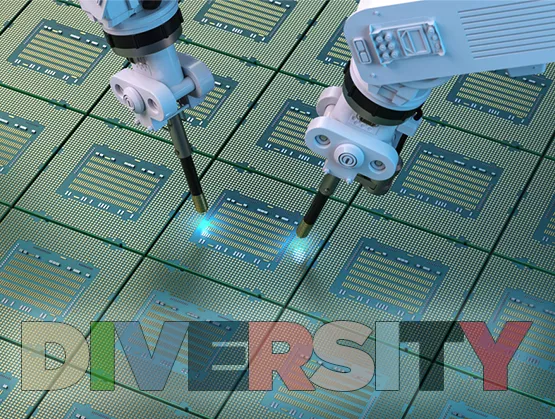 The day concluded with a fireside chat on Diversity through Veteran Hiring with Kate W. Alcott, Director of Vet S.T.E.P. at NYCREATES/SUNY Polytechnic Institute, and Melinda Gomez, Manager of Veteran Initiatives at the SEMI Foundation. With the tremendous diversity and skills in the U.S. military, veterans are ideal candidates for employment in the semiconductor industry.
The day concluded with a fireside chat on Diversity through Veteran Hiring with Kate W. Alcott, Director of Vet S.T.E.P. at NYCREATES/SUNY Polytechnic Institute, and Melinda Gomez, Manager of Veteran Initiatives at the SEMI Foundation. With the tremendous diversity and skills in the U.S. military, veterans are ideal candidates for employment in the semiconductor industry.
Gomez and Alcott said companies can become not just military friendly, but military ready by making it easier for veterans to connect to industry jobs and creating employee resource groups to foster a sense of belonging once they are hired.
Building a Career in Microelectronics
Day two featured presentations and interactive activities centered on strategies and tools for workers to uncover careers in microelectronics. Two sessions on A Day in the Life of an Engineer featured a cross section of professionals from Applied Materials, DuPont, EMD Electronics, Lam Research, Synopsys and TEL. The speakers shared how they entered the industry, details about their work, and their love for working in the chip industry for reasons ranging from making a positive impact on the world and the new challenges and opportunities to which they are exposed. they’re exposed to.
One session featured interns and recent graduates from Applied Materials, EMD Electronics and Lam Research sharing their experiences about working in microelectronics, as well as their expectations and goals for a career in an industry that helps shape the future.
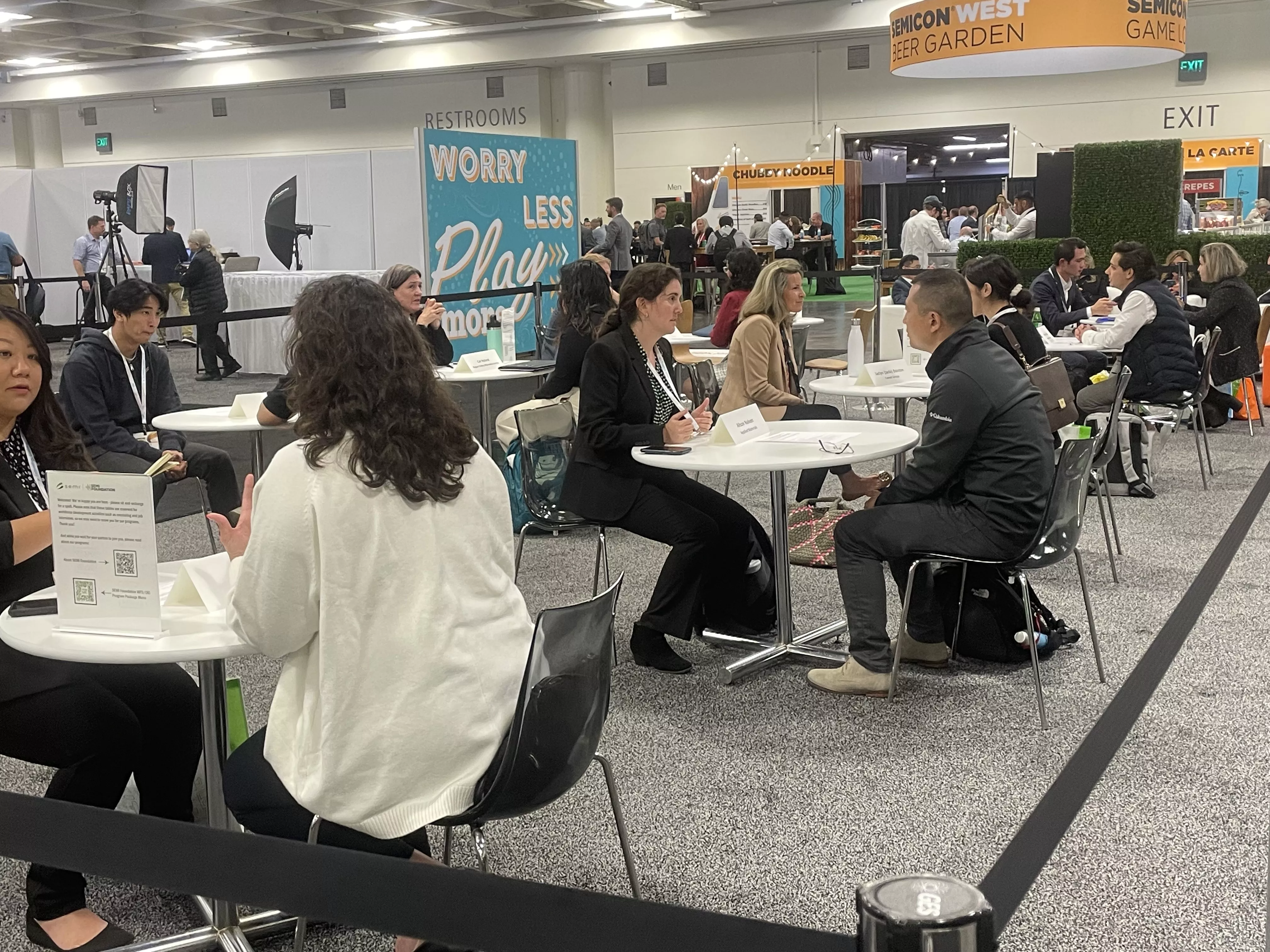
Flash mentoring between industry professionals and students.
Talks by talent recruiters from Edwards Vacuum and Nikon Precision took aim at helping students and young professionals succeed in the chip industry. Speakers shared advice and tips for resume building, interviewing skills and what hiring managers look for when considering recruits. The session included a mock student pitch with coaching on the do’s and don’ts of interviewing. One key takeaway: When interviewing, applicants should be prepared to discuss their strengths and weaknesses and share why they want to work for the company.
Day two also included flash mentoring that paired 10 industry professionals with 20 students. Students had 10 minutes to pose questions to industry representatives, build connections and gather insights into pursuing a career and thriving in the semiconductor industry. The session was followed by a reception for speakers, students and SEMI Foundation supporters.
Building an Inclusive Talent Pipeline
New to this year’s Workforce Development Pavilion were presentations by members of MNT-EC (The Micro Nano Technology Education Center), which was founded on the idea that working together to accomplish a greater goal enhances the quality of Micro Nano Technology education for students. MNT-EC’s primary objective is to create professional development opportunities and partnerships for educators, as well as provide undergraduate research opportunities to underrepresented faculty and students.
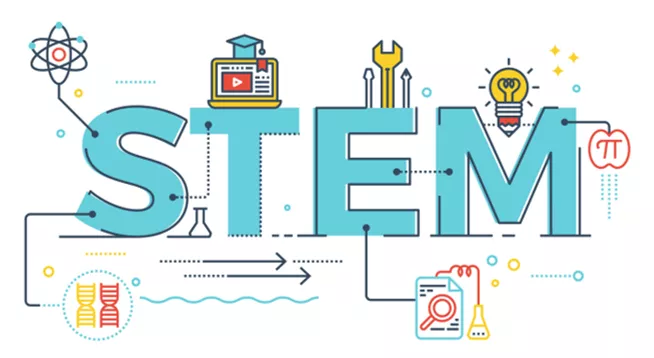 MNT-EC members presented over the course of three days on topics ranging from Serving Diverse Communities through Two-Year Colleges to Workforce Development Initiatives through Collaborative Effort and Innovative Approaches and Best Practices for Preparing and Expanding the U.S. Semiconductor Workforce. Community colleges are adept at providing technical training to build a diverse and skilled workforce. However, regionalized approaches supported by a national network of schools need to be developed. Speakers urged industry to take an active role in supporting community college STEM training programs.
MNT-EC members presented over the course of three days on topics ranging from Serving Diverse Communities through Two-Year Colleges to Workforce Development Initiatives through Collaborative Effort and Innovative Approaches and Best Practices for Preparing and Expanding the U.S. Semiconductor Workforce. Community colleges are adept at providing technical training to build a diverse and skilled workforce. However, regionalized approaches supported by a national network of schools need to be developed. Speakers urged industry to take an active role in supporting community college STEM training programs.
Presentations that teamed industry experts with representatives from academia included Upskilling the Microelectronics Workforce Via Non-traditional Pathways by speakers from The Manufacturers Association of Central New York (MACNY), the State University of New York, and Mohawk Valley Community College, and Purdue University’s Summer Training, Awareness, and Readiness for Semiconductors (STARS).
SEMI High Tech U
On the final day of SEMICON West 2023, 40 K-12 students from Self-eSTEM, a non-profit that supports Black, Indigenous and people of color (BIPOC) young women and girls at every stage of the STEM talent pipeline, heard an inspiring address from Kylie Patterson, the CHIPS for America Senior Advisor for Opportunity and Inclusion.
Offering her young audience advice, Patterson said “Never tell yourself ‘no’, in particular if you enter a room where no one looks like you. Don’t interpret that as a ‘no’ or that you ‘don’t belong.’ Network with those around you because they will be your greatest supporters, and there are no wrong turns, even if it feels like you have gone off track. You haven’t. There are no wrong turns as you navigate school and career, only detours, expressways, and redirections.”
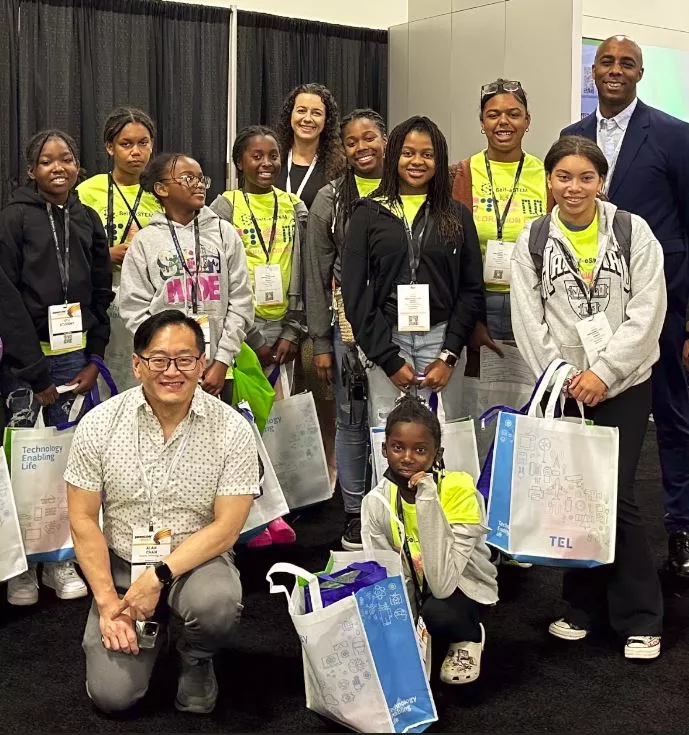
Self-eSTEM students, instructors and teachers.
Professionals from Advantest, Athinia, Edwards Vacuum and TEL shared industry information and advice with the young STEM participants. Sonoma Tech and Climate Equity Collaborative volunteers led students through a Build an Air Pollution Sensor Kit activity to build an indoor air pollution sensor and edit a few lines of code to adjust the averaging time of the sensor. The group then tested their sensor on response to indoor air pollutants. In addition, students from Self-eSTEM visited exhibitor booths to learn about chip industry careers and heard from industry professionals during a panel moderated by Jeana Harper-Kirkland, program navigator at the SEMI Foundation.
Learn more about how to engage in workforce development initiatives such as WFD pavilion activities by visiting the SEMI Foundation. And make sure to follow us on LinkedIn for updates on our activities.
Margaret Kindling is Senior Program Manager for Diversity, Equity, and Inclusion at the SEMI Foundation. She promotes inclusion and diversity through managing programming at the annual Women in Semiconductors and the SEMICON West Workforce Development Pavilion. She also participates in the Manufacturing Ownership Diversity (MOD) Working Group.










